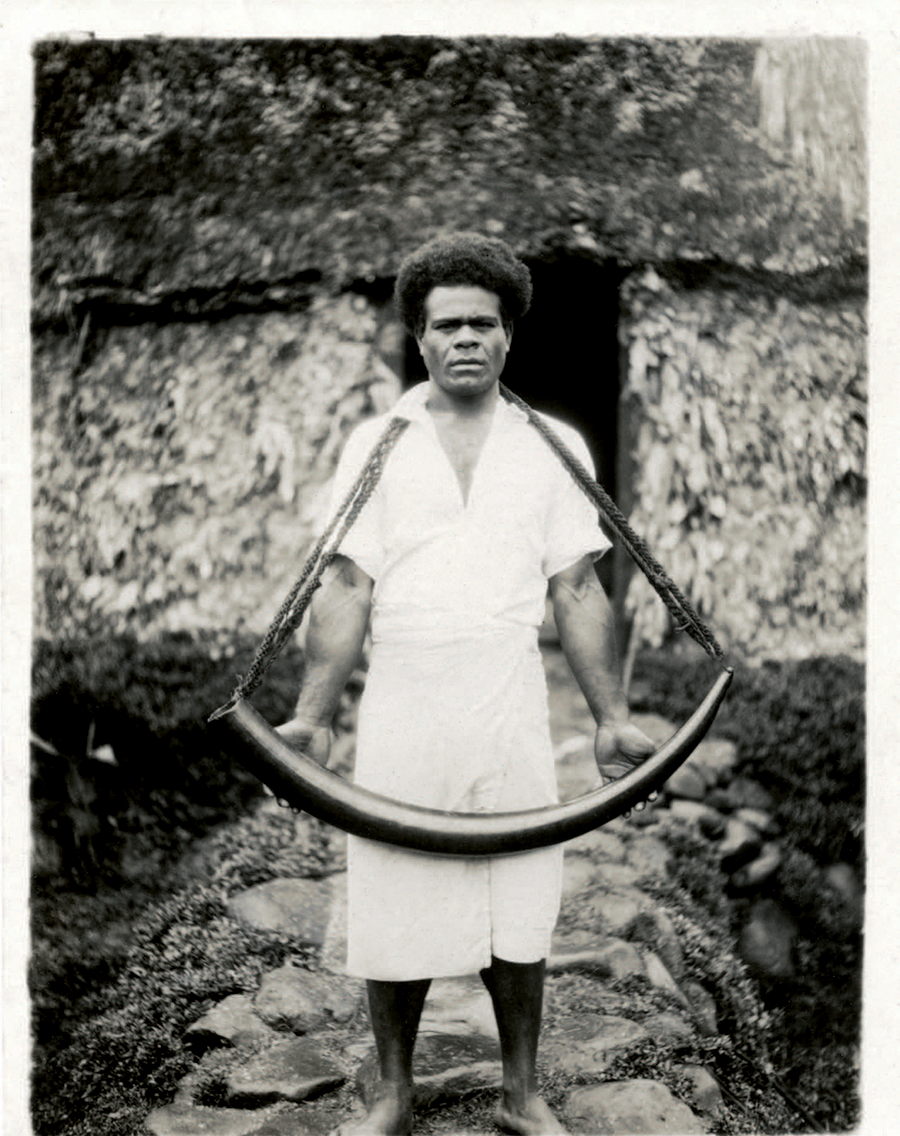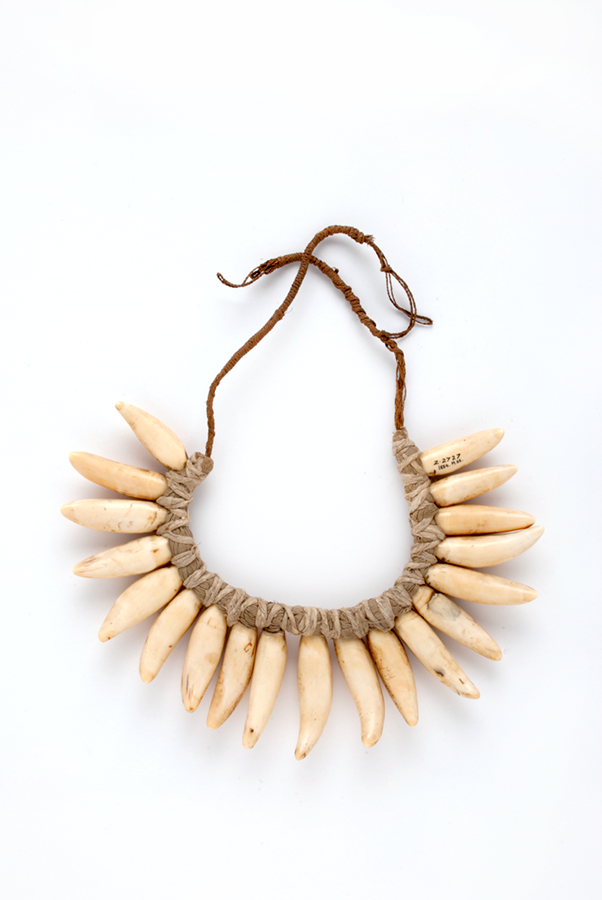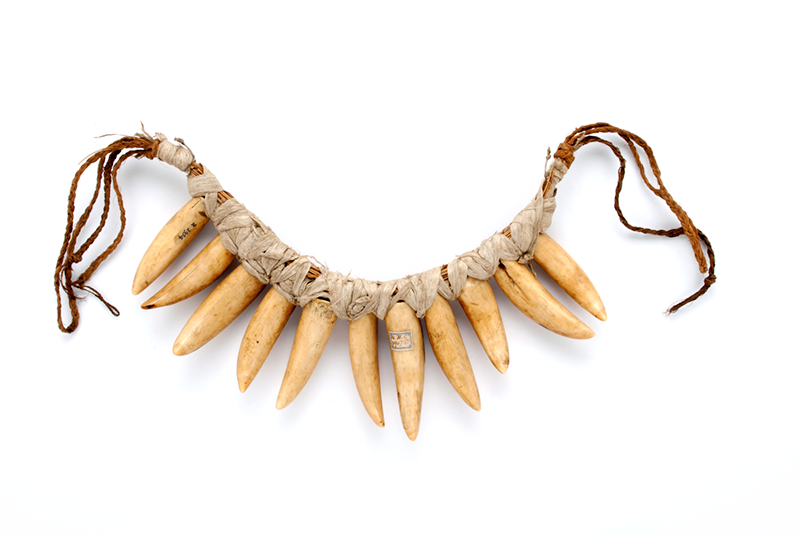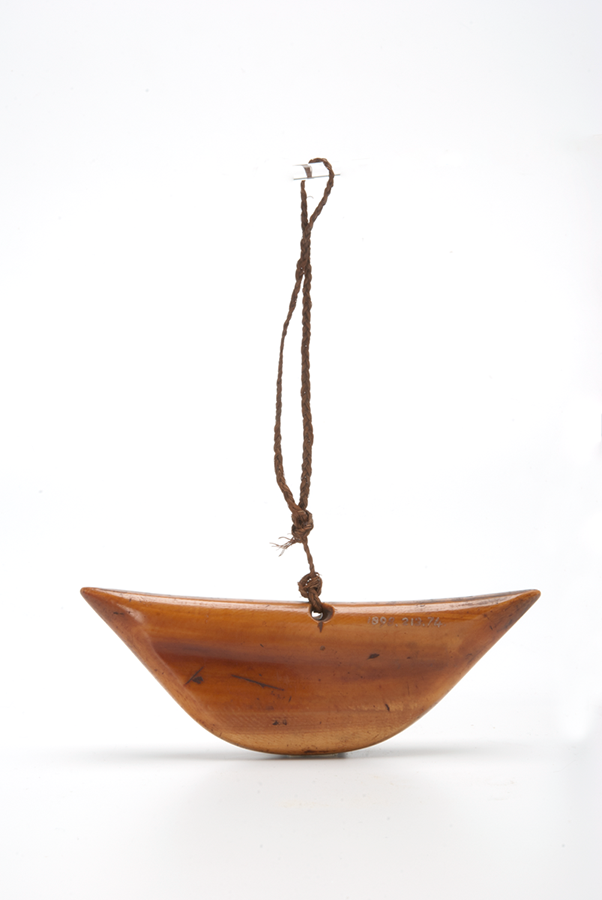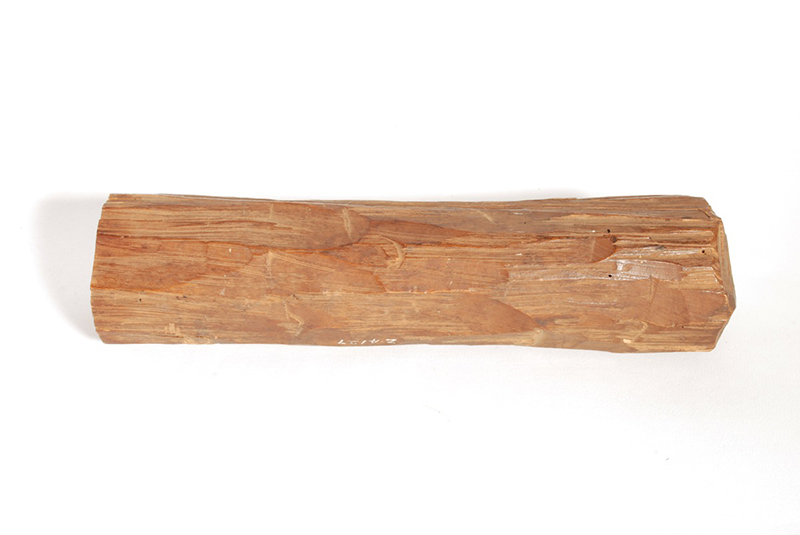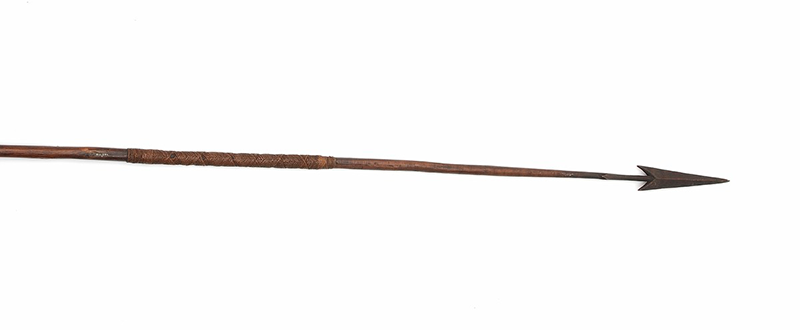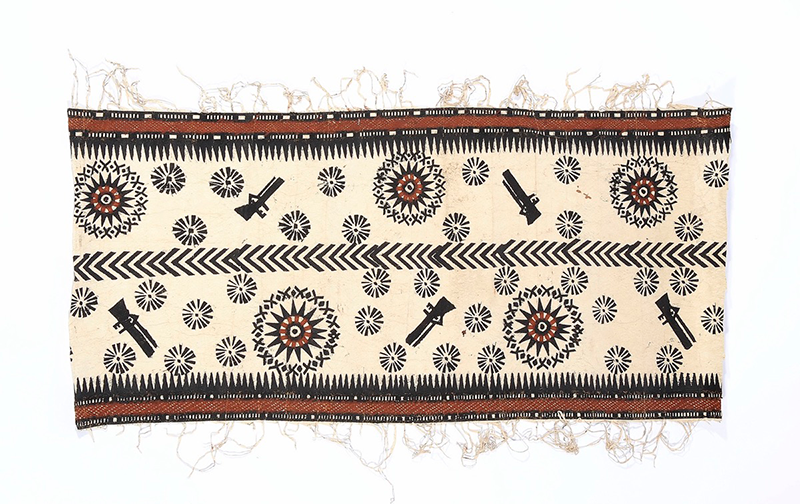European and American traders came to Fiji in increasing numbers from the early 19th century. Sandalwood was plentiful in southwest Vanua Levu and the region was rapidly exploited by an influx of European ships. Traders then turned their attention to bêche-de-mer (sea cucumber), which also commanded high prices in China. Other trade items inlcuded turtle shell, pearl shell, coconut oil and arrow-root.
Traders and whalers quickly realised the importance of whale teeth to Fijians. Walrus and elephant tusks, usually cut into pieces, also started circulating within Fiji. These materials were sometimes carved to resemble their whale ivory counterparts.
Fijians rapidly adapted new resources - nails, axes, hatchets, chisels, knives, calico and small glass beads. Muskets were traded widely and used alongside traditional weapons.
Man holding an elephant tusk tabua. Photographer unknown. Collected by G.K.Roth, probably 1930s-1950s, Fiji. private collection
Traders & whalers
Throughout the 19th century, traders and whalers introduced large amounts of whale ivory, and new materials such as metal, glass beads and calico. The foreign origin of these materials made them desirable and valuable to Fijians. Many were thus incorporated into prestigious objects. Other items of trade such as cotton reels or handkerchiefs were turned into ear ornaments or items of clothing, but not usually collected by European visitors.
Use the drop down menu below to explore the objects in this section.
Nineteen whale teeth strung on fine strands of plaited coir. Trade calico and Fijian barkcloth are woven around the central cord.
Viti Levu, Fiji. Collected by A. Maudslay, 1875-80. Z 2727
Eleven whale teeth on a cord of plaited coir and barkcloth. One tooth is decorated with scrimshaw showing an early steam locomotive.
Fiji. Collected by Sir A. Gordon, 1875-80. Z 2954
Carved from a piece of elephant tusk. Traders brought walrus and elephant ivory to Fiji where they were locally accepted as equivalent to whale ivory.
Fiji. Collected by Sir A. Gordon, 1875-80. 1918.213.74
Traders visited Fiji for sandalwood from the late 18th century. Demand was so high that in a few decades the supply was nearly exhausted.
Fiji. Collected by A. von Hügel, 1875-77. Z 4127
The head of this Fijian spear imitates a whaler’s harpoon. The shaft is bound with very fine plaited coir cords (magimagi).
Fiji. Collected by Sir A. Gordon, 1875-80. Z 3959
From the early 19th century firearms were acquired from traders or exchanged with Tongans. Cut from a larger piece and decorated with stencilled floral, geometric and musket patterns, this barkcloth demonstrates the importance of this new commodity.
Fiij. Collected by A. von Hügel, 1875-77. Z 30483


